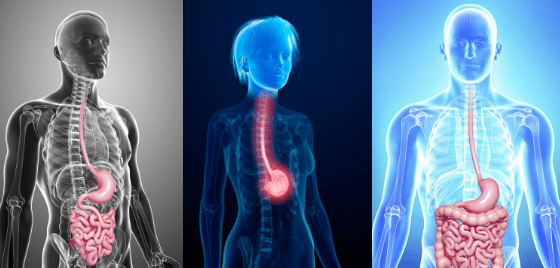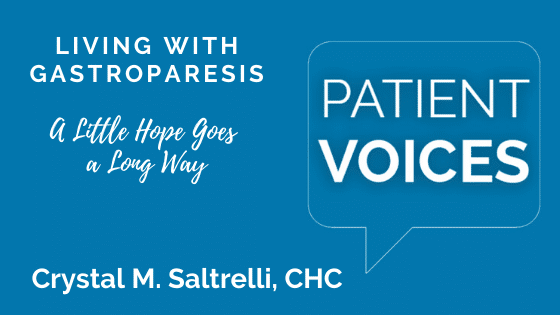Nutrition for Gastroparesis
If you have gastroparesis, working with your healthcare team to help manage symptoms is essential. While medical treatment is usually part of the plan, nutrition can also play a very important role.
What is gastroparesis?
When you swallow your food while eating, it travels down your esophagus and into your stomach. Your stomach is an important site of digestion where acid and contractions help break down your food before it moves to your intestines.
Gastroparesis is characterized by delayed stomach emptying. If you have gastroparesis, food stays in your stomach for longer than it’s supposed to. This can cause a variety of symptoms that can severely affect your quality of life.
What are the signs and symptoms of gastroparesis?
Symptoms of gastroparesis can range from mild to severe, depending on the case. The following are just some of the signs and symptoms to look out for:
- Nausea/vomiting
- Feeling full early in a meal
- Regurgitation of food (undigested food coming up)
- Acid reflux/heartburn
- Abdominal pain/bloating
- Loss of appetite
Serious cases of gastroparesis can also lead to changes in blood sugar levels and weight loss.
What causes gastroparesis?
In many cases, the causes of gastroparesis are unknown. It’s usually related to damage to the vagus nerve, which is the nerve that controls the muscles in your stomach. Nerve damage from diabetes or stomach and intestinal surgery can also cause gastroparesis.
How do you test for gastroparesis?
The gold standard test for diagnosing gastroparesis is the gastric emptying scintigraphy. During the test, you will eat a meal that contains a small amount of radioactive material. This helps doctors test your gastric emptying rate.
Additional tests for those with suspected gastroparesis include upper GI endoscopy, ultrasound, and upper GI series (x-rays) to help look for other conditions.
Medical treatments for gastroparesis
Medical treatments for gastroparesis include:
- Medications to stimulate stomach the muscles – Metoclopramide (Reglan) and erythromycin
- Medications for nausea and vomiting – Prochlorperazine (Compro), diphenhydramine (Benadryl, Unisom), ondansetron (Zofran)
- Placement of a gastric stimulator (often called a “pacemaker”)
In serious cases, tube feeding or IV nutrition may be needed if the person is not able to meet their calorie needs or is malnourished.
Nutrition for gastroparesis
The cornerstone of nutrition for gastroparesis is to be aware of the factors that can delay gastric emptying.
- Liquids – Thin liquids travel faster from the stomach to the intestines than thick liquids and solids.
- Fiber – Fiber slows down gastric emptying, so those with gastroparesis should keep fiber intake low.
- Fat – Higher fat foods slow down gastric emptying. Carbohydrates pass through the stomach the quickest, followed by proteins.
- Food temperature – Hot foods move through the stomach quicker than cold foods.
The 3-Step Diet
If you are experiencing severe nausea and vomiting, your doctor may recommend a 3-step diet to help control symptoms and get you to maintenance. The progression of the diet must be supervised by your healthcare provider.
Step 1: Only clear liquids are allowed to help prevent dehydration. This step typically lasts for no more than 3 days.
Step 2: Small amounts of fat are allowed (~40 grams per day). High fat liquids like milkshakes may also be tolerated at this time. This step may last 1-2 weeks.
Step 3: This step limits fat to about 50 grams per day and is low in fiber. It’s designed to be for long-term maintenance of your gastroparesis. Some doctors may keep meat intake low during step 3 and add lean meats to a 4th step.
Maintenance diet for gastroparesis
- Eat 6 or more small meals per day
- Sit up for 1 hour after eating
- Chew your food
- Limit fat
- Limit fiber
- Puree nuts and seeds (eat these in moderation, as they are high in fat)
- Avoid beverages with a high alcohol concentration alcohol like gin, vodka, rum, tequila because these can slow gastric emptying.
|
Gastroparesis Diet |
|
| Category | Examples |
| Fruits & Vegetables |
|
| Starches |
*Avoid whole grains |
| Proteins |
|
| Fats and Oils |
|
Dietary changes can play a large role in the management of your gastroparesis symptoms. If the dietary recommendations feel overwhelming, schedule an appointment with a registered dietitian who can help you fit them into your daily routine.
Katelyn Collins, RD is a registered dietitian specializing in irritable bowel syndrome (IBS) and digestive health. Katelyn’s personal experience with IBS first sparked her passion for nutrition and health. Since then, she has been a vocal advocate for the digestive health community and has dedicated her own nutrition practice to serving those with digestive conditions.
Listen to our
latest Podcast!







